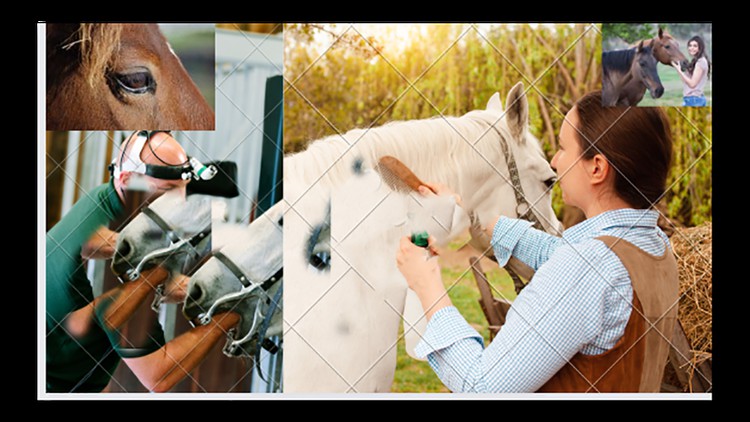
horse care
What you will learn
points of the horse
color of the horse
breeds of the horse
how to approach ahorse
grooming hoof care
Description
Horse care and management courses teach you about the basics of taking care of horses, including feeding, grooming, stabling, and healthcare. These courses are a great option for people who are interested in learning more about horses or who want to become horse owners.
Horse care and management is all about providing your horse with everything it needs to thrive. This includes a nutritious diet, clean and comfortable shelter, regular exercise, preventative healthcare, and proper handling.
- Nutrition: Horses are grazing animals, so their diet should be high in fiber and low in sugar and starch. Hay is the foundation of a horse’s diet, but most horses will also need some grain or concentrate to meet their energy needs. The amount of feed a horse needs will vary depending on its age, breed, activity level, and overall health.
- Shelter: Horses need a clean, dry, and well-ventilated place to live. Stalls should be large enough for the horse to turn around comfortably and lie down. They should also be free of sharp objects and hazards. If you live in a climate with extremes of temperature, you may also need to provide your horse with access to shade or shelter from the elements.
- Exercise: Horses are meant to move, so they need regular exercise to stay healthy. The amount of exercise a horse needs will vary depending on its age, breed, and activity level. However, most horses will need at least a few hours of turnout time each day.
- Preventative healthcare: Regular veterinary care is essential for keeping your horse healthy. This includes vaccinations, deworming, and dental care. You should also develop a relationship with a farrier who can trim your horse’s hooves on a regular basis.
- Handling: Horses are large, powerful animals, so it’s important to handle them with care. Always approach a horse slowly and calmly, and let them know you’re there before you touch them. Be gentle and patient, and avoid making any sudden movements.
English
language
Content
Introduction
Introduction
classification
classification
horse identification
horse identification
Horse Age
age of the horse
Horse color
horse colors
Body conformation
Skelton of the horse
body conformation
horse conformation evaluation
conformation fault meaning
horse conformation and faults
points of the horse
horse points
Horse dentation
horse dentation
horse breeds
horse breeds
horse breeds2
some other breeds
Horse gait
horse gait
horse gaits
horse behaviour
horse behavior
Approaching ahorse
Approaching ahorse2
Approaching a horse
Grooming Hoof care
grooming3
care of the hoof
hoof care
hoof and dental care
hoof and dental care